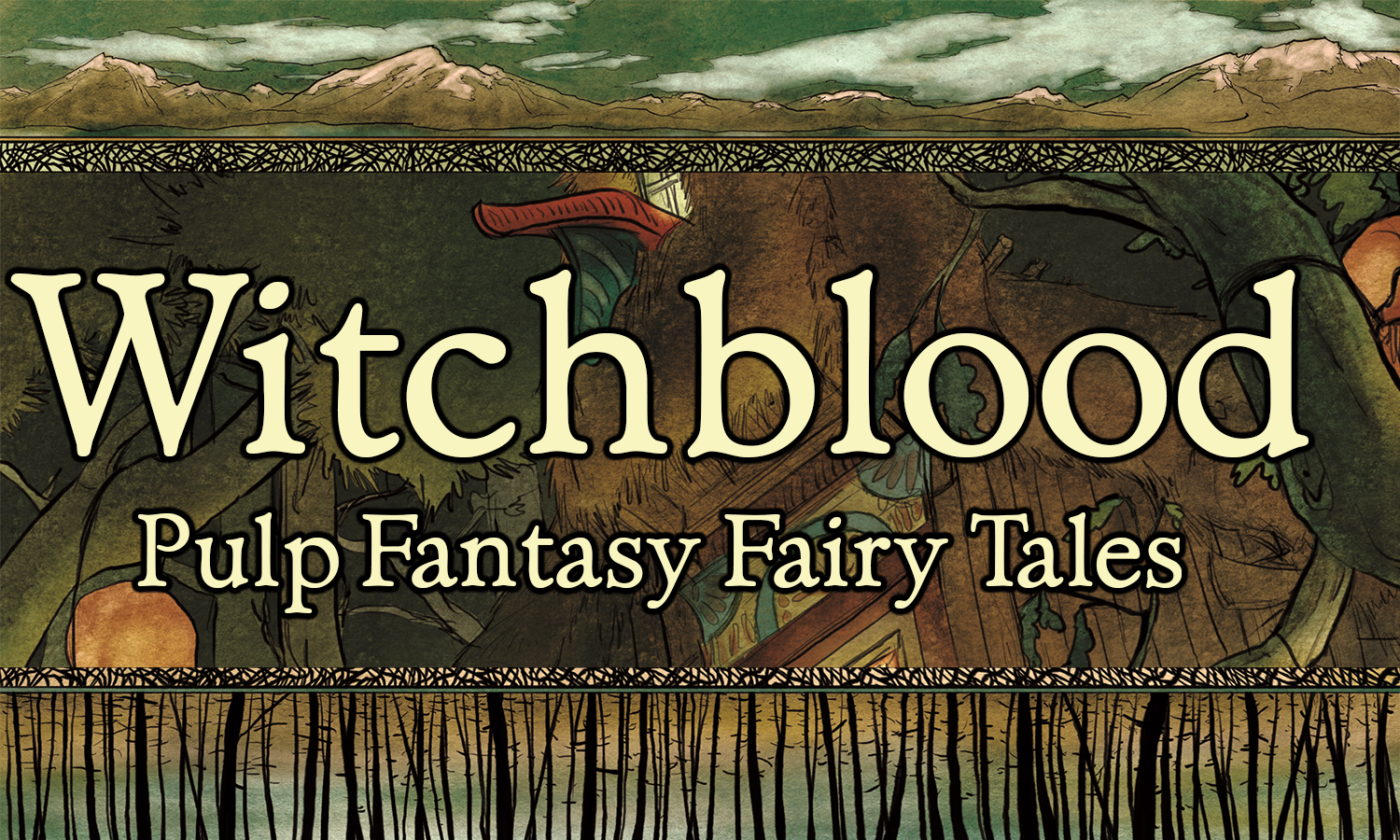
Witchblood: A Game of Pulp Fantasy Fairy Tales
A downloadable game
The Woods...
...are dark and deep, but they are not lovely. Inch by inch, they close in on the villages of humanity. And in those encroaching wilds dwell the witches. Ancient, primeval, creatures from before the First Eve and still potent today.
In this world, where life is brutish and short, you stand tall. You are a witch's grandchild, or a disinherited noble, or a scion of the good folk. You are part of humanity, but also apart from it, by your own choice or otherwise. You are caught between the expectations of your birth and your own needs and desires.
Run from your past, or chase it. Love freely, or not at all. Stand between the hearth and the wilds. They may not call you a hero, but your name will live on ever after.
Witchblood is a roleplaying game about who you were, who you are, and who you will become. Take on the role of a self-determined, tough-as-you-want pulp fantasy protagonist wandering a world of bloody -- but not always grim -- fairy tales. Wield the powers of birthright and destiny. Explore the darks of the forest and brace yourself against the bite of the wind. Do what’s right, or just what’s right for now.
You Get...
...232 pages of action and identity crises!
...a setting that combines fairy tale darkness with sword and sorcery heroics.
...a wild variety of character birthrights, including witchblooded, trolls, and ghostborn.
...a diverse set of character callings, including fortune teller, balladeer, and sellsword.
...extensive GM tools, including templates for villagers, antagonists, and the dooms they face.
The Rules...
...focus on the internal lives of the wanderers. Expressing and appealing to emotions are acts as powerful as swinging a fist or a sword, and the wanderers’ adventures demand both.
Each character trait is in tension with an opposite; for example, Courage is in tension with Wrath. They shift with actions you take and harm you suffer. The result is dramatic and often tense character growth and conflict.
Safety...
Witchblood contains general horror elements such as blood and personal harm, although not graphic violence. Some parts of the book bring up body horror, abandonment, and ostracization. Personal identity is often in conflict with societal norms.
The Introduction gives content warnings for each chapter, enabling you to pick and choose what elements you include in your game.
| Status | Released |
| Category | Physical game |
| Rating | Rated 5.0 out of 5 stars (1 total ratings) |
| Author | Rose on Mars |
| Tags | Dark Fantasy, Fairy Tale, Horror, sword-and-sorcery, Tabletop role-playing game |
Purchase
In order to download this game you must purchase it at or above the minimum price of $20 USD. You will get access to the following files:
Download demo
Development log
- Bookmark CorrectionJul 29, 2022
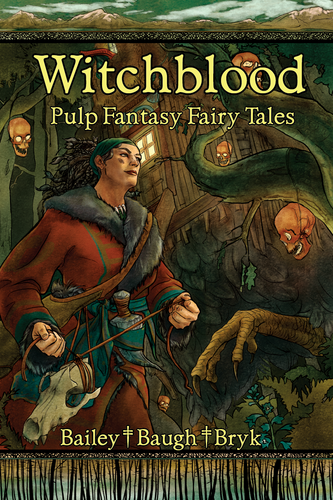
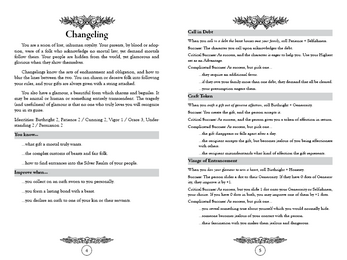

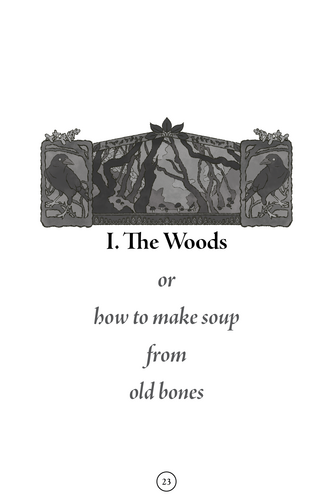
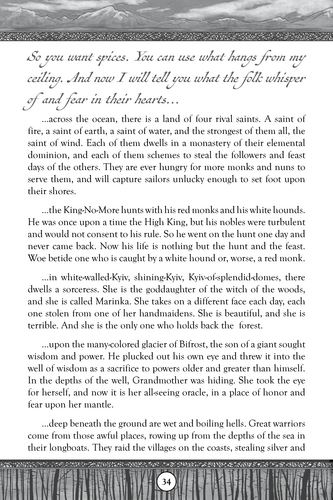
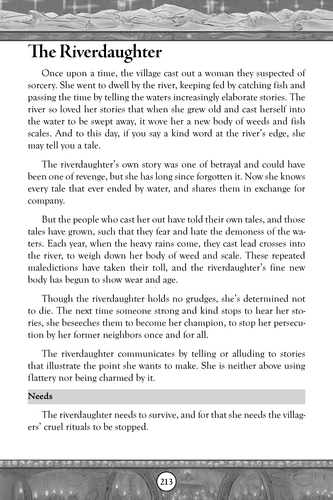
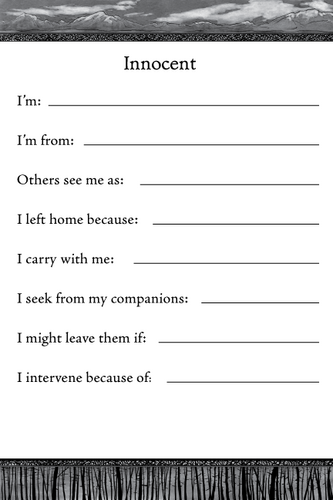
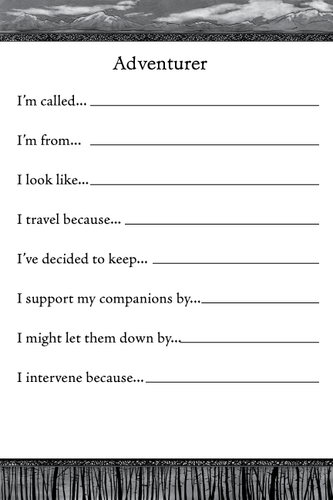
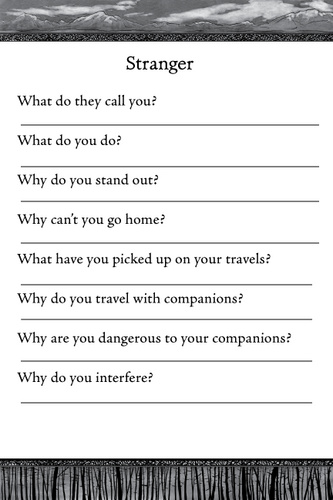
Comments
Log in with itch.io to leave a comment.
how solo friendly is this? whats the basic resolution mechanic/system?
I'm using it quite successfully for an extended single character solo campaign. I use a Once Upon a Time deck for NPC/location ideas. I've also used Untold to structure sessions. Depends on my mood!
The demo file here on itch has the basics of the system. (It's also on DriveThru.)
Here's a quick rundown from the Introduction:
Traits
Wanderers have two types of numbered traits: Identities and Qualities.
Your character has three Identity pairs, such as Patience and Cunning. These increase or decrease slowly; in a single session, you’ll probably have only one or two Identity changes. Within each pair, the Identities are opposed. Identities are rated from 0 to 5 dots, but a pair can’t add up to more than 7. If an event would increase a pair over that threshold, it instead subtracts from the opposite Identity of the one that’s increasing.
Each Identity pair has two pairs of opposed Qualities, such as Generosity and Selfishness. Qualities increase or decrease more frequently than Identities. Like Identities, each Quality in a pair is rated from 0 to 5, and like Identities, the total for each pair must be no greater than 7.
Traits can slide (move dots from a trait to its opposite), improve (add dots to the trait without changing its opposite), or suffer loss (remove dots from the trait without affecting its opposite).
Rolling Dice
When your wanderer takes action and the outcome is in doubt, you roll a number of 10-sided dice (d10s). How many dice is determined by the sum of one of your character’s Identities and one of their Qualities, and will usually be between 3 and 10.
After rolling, you split the dice into sets based on the number showing on each die. (Sets of 1 die don’t count.) The number showing is the Height of the set, while the number of matching dice is called the Width. For example, a set of two dice showing four has a Width of 2 and a Height of 4.
Failure: If you get no sets, you don’t get what you want. You may be unable to complete the task, or something more pressing interrupts you as you try.
Success: If you get any sets, you succeed and get what you want.
Complicated Success: If you get only sets with lower Height than the Tension, you get what you want, but there’s a catch. (See Tension, below.)
Critical Success: If you get any set with a Height of exactly 10, you get what you want, and something extra.
Tension
If you aren’t rolling against someone who can actively oppose you, you check your sets against the Tension, a number which drives dramatic pacing. If your Highest set is higher than or equal to the Tension, you succeed without complications. If your Highest set is lower than the Tension, you get what you want, but there’s a complication or a new problem presents itself. The Tension goes up by 1 with uncomplicated success, down by 1 with a complicated success, and down by 2 with a failure.
A note on Tension: it never makes you fail at something, just makes it potentially complicated.
Not sure where to post it, but the 7-15-2022 PDF has an issue. The index on the left side has a bunch of incoherent entries. For example, "_tr6kp4i2bfvi". Not sure where I should post this.
Thanks for catching that! InDesign does it sometimes for no reason I understand, and I forgot to check for it this time. :)
I've updated the file.